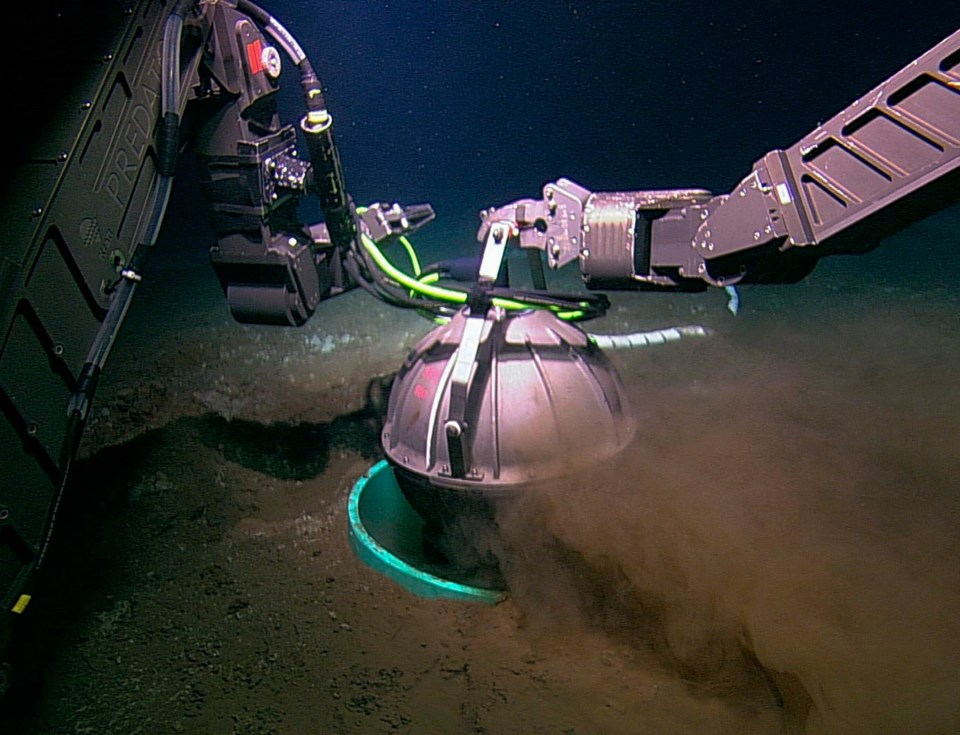We’ve all unknowingly taken a tiny step closer to Asia in the past few months.
Sure, the Canada-China Year of Tourism invites us to explore each other’s countries. The emerging trade wars might be causing U.S. trading partners to consider their own mutual trade agreements. Asians seek safe and stable real-estate investments here, and Japanese, Korean and Chinese kids have travelled to Victoria for decades to improve their English.
But superseding all of those ties to Asia, southern Vancouver Island is on the leading edge of a continent that yearns geologically for the Orient.
According to federal researchers, the south Island’s recent series of thousands of tiny earthquakes, collectively called episodic tremor and slip, that shiver up and down the coast every 14 months or so have shifted us five millimetres westward.
Southern Vancouver Island sits atop the Cascadia Subduction Zone, where the growing ocean-floor Juan de Fuca plate rubs against the North American continent. Because ocean plates are made of denser rock, the Juan de Fuca plate lost the battle for surface supremacy long ago. For the past 200 million years — beginning before the time of long-necked dinosaurs — the plate’s eastern expanse has been forced under the edge of the more buoyant North American continent.
The subduction happens at an average rate of about 40 millimetres each year — about as fast as fingernails grow — measured over many millions of years. The south island’s recent westward shift is part of that on a much, much shorter time scale.
Subduction has not subdued the Juan de Fuca plate. As it is pushed under, it catches and sticks on the underside of North America’s edge, with pressure building as the plates continue to push past the hitches. Over millions of years, the pressure has caused the continent’s edge to lift, buckle and fold like a rucked-up area rug.
Vancouver Island and the Gulf Islands form the upper bends of those rucked-up ridges.
The pressure builds and builds until suddenly, it overcomes the friction and forces parts of the plates past each other.
The recent spate of tiny shakes released a little bit of the pressure beneath southern Vancouver Island. Occurring 25 to 45 kilometres down, they consisted of tremors and slip so small and slow only the most sensitive detectors noticed them.
They began as predicted in March, but from mid-June until mid-July, about 10,000 occurred.
Over time, the episodic tremors and slips in the region will reveal where the two plates are locked — where pressure is building up that could be released during a larger quake. And as these small slips between tectonic plates relieve pent-up pressure in some areas, they increase pressure on nearby stuck areas.
This might be why when sequential earthquakes or slow-slip events are recorded, geologists view them as “preliminary earthquakes.” Although episodic tremor and slip events do not necessarily or always lead to more powerful earthquakes, they can anticipate bigger events.
And if a major earthquake strikes the area, we’d take a much more dramatic leap toward Asia than the pencil-width distance covered these past months. Evidence indicates that when the next large subduction earthquake occurs in the Cascadia zone — when the predicted Big One happens some time in the next 50 years — the rucked-up ridges that Vancouver Island and the Gulf Islands sit on will flatten somewhat, and compressed coastal lands as far inland as the Cascade mountains will drop abruptly and spring westward.
Just as Japan lost elevation and moved eastward with the 2011 earthquake, geologists predict that land all along the Cascadia Subduction Zone, from northern Vancouver Island to northern California, will lose as much as two metres in elevation and shift toward Japan by as much as 35 metres.
Although we’ve travelled only half a centimetre westward these past months, compared to what the journey could be, the experience has been smooth and painless. So raise a cup of sake or glass of Tsingtao to our nearing Pacific neighbours — to celebrate cultural and economic ties and opportunities, as well as geological inevitability.
But keep the toast quiet. If B.C. Ferries finds out its vessels now travel farther from Mainland to Island terminals, we might pay more to travel east toward the rest of Canada.
And update your earthquake-survival kit, too.



